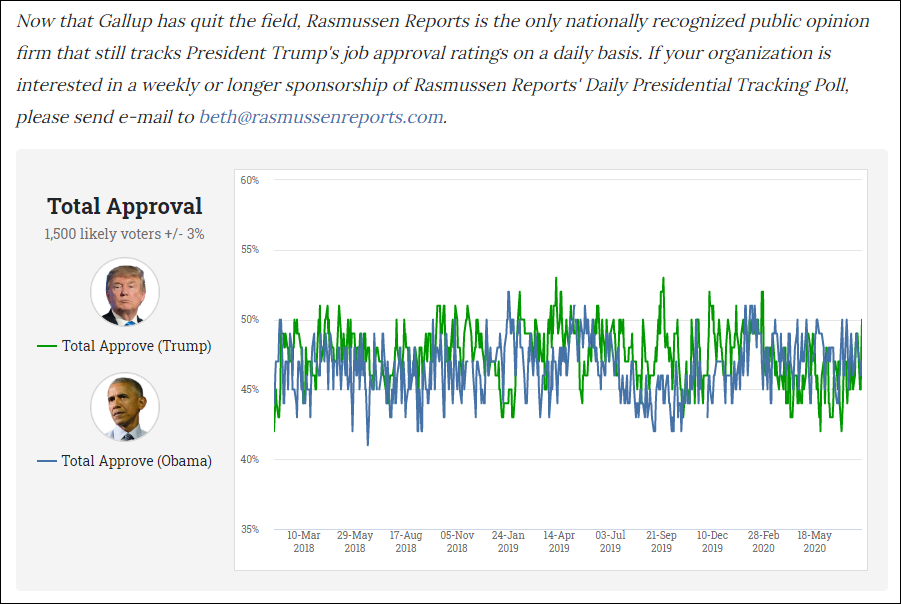Rasmussen Presidential Poll

The Rasmussen Reports presidential poll is a prominent survey that gauges public opinion on the upcoming presidential election. It has been conducted regularly since 2003, providing insights into voter sentiment and potential election outcomes.
History and Evolution
The Rasmussen Reports presidential poll was established in 2003 by the Rasmussen Reports, a polling firm known for its focus on public opinion research. The poll has evolved over time, adapting its methodology and expanding its scope to cover various aspects of the presidential election. Initially, the poll primarily focused on national voter preferences, but it has since incorporated regional and demographic data to provide a more nuanced understanding of voter trends.
Methodology
The Rasmussen Reports presidential poll employs a multi-stage sampling technique to select a representative sample of American voters. The poll uses a combination of random digit dialing and online surveys to reach respondents. The sample size typically ranges from 1,000 to 1,500 respondents, which is considered sufficient to produce statistically reliable results.
- Sampling Techniques: Rasmussen Reports utilizes a combination of random digit dialing (RDD) and online surveys to reach respondents. RDD involves randomly generating phone numbers to contact potential participants. Online surveys are conducted through partnerships with websites and social media platforms. This approach aims to ensure a diverse and representative sample of voters.
- Question Wording: The Rasmussen Reports presidential poll employs a standardized set of questions designed to measure voter preferences and attitudes. The questions are carefully worded to minimize bias and ensure clarity. The poll typically asks respondents to indicate their support for specific candidates or policies, as well as their overall satisfaction with the current political climate.
- Data Collection Methods: The poll collects data through phone interviews and online surveys. Phone interviews are conducted by trained interviewers who follow a structured script. Online surveys allow respondents to complete the questionnaire at their convenience. The data collected is then analyzed to produce statistical estimates of voter preferences and trends.
Comparison with Other Presidential Polls, Rasmussen presidential poll
The Rasmussen Reports presidential poll shares similarities with other prominent presidential polls, such as the Gallup Poll, the Pew Research Center Poll, and the ABC News/Washington Post Poll. All of these polls rely on statistical sampling techniques to collect data from a representative sample of voters. However, there are also some key differences in methodology, including the specific sampling techniques used, the question wording employed, and the data collection methods adopted.
- Sampling Techniques: Some polls, like the Gallup Poll, primarily rely on random digit dialing, while others, like the Pew Research Center Poll, incorporate both phone interviews and online surveys. The Rasmussen Reports poll combines RDD and online surveys, aiming to capture a broader range of voters.
- Question Wording: The wording of questions can vary across different polls, which can influence the results. For example, the Rasmussen Reports poll is known for its focus on “likely voters,” while other polls may include all registered voters in their samples. This difference in question wording can lead to variations in the estimated level of support for candidates.
- Data Collection Methods: Some polls primarily rely on phone interviews, while others utilize online surveys. The Rasmussen Reports poll utilizes both methods, aiming to maximize the reach and representativeness of its sample. This approach can provide a more comprehensive understanding of voter preferences.
Analyzing Rasmussen Presidential Poll Results

The Rasmussen Reports presidential polls have become a prominent source of information on public opinion regarding the upcoming presidential elections. Analyzing these polls provides valuable insights into the political landscape, voter preferences, and potential election outcomes.
Key Trends and Patterns in Rasmussen Reports Presidential Poll Data
The Rasmussen Reports presidential polls track the popularity of candidates over time, providing a dynamic view of the race. Several key trends and patterns emerge from analyzing the data.
- Candidate Popularity Fluctuations: The polls reveal that candidate popularity is not static, but rather subject to fluctuations based on various factors, such as media coverage, campaign events, and current events.
- Demographic Differences: The polls often highlight demographic differences in voter preferences. For instance, certain candidates may enjoy higher support among specific age groups, ethnicities, or geographic regions.
- Shifting Political Landscape: The polls can also reflect shifts in the overall political landscape, such as changes in voter sentiment towards specific political parties or ideologies.
Accuracy and Reliability of Rasmussen Reports Presidential Polls
The accuracy and reliability of any poll are crucial for its value. Rasmussen Reports has a history of conducting polls, and their accuracy has been evaluated by various sources.
- Performance in Predicting Election Outcomes: Rasmussen Reports has a mixed record in predicting election outcomes. While they have accurately predicted some elections, they have also missed others. Factors such as the timing of the poll, sample size, and the overall political climate can influence the accuracy of predictions.
- Methodology and Sampling Techniques: The accuracy of any poll depends on its methodology and sampling techniques. Rasmussen Reports employs a variety of methods, including telephone and online surveys, to gather data. The quality of their sampling methods and the representativeness of their sample are key factors in determining the reliability of their results.
Factors Influencing Rasmussen Reports Presidential Poll Results
The results of Rasmussen Reports presidential polls are influenced by various factors, including:
- Demographics: The demographic characteristics of the respondents, such as age, gender, race, and geographic location, can significantly impact the results.
- Political Climate: The overall political climate, including the state of the economy, current events, and public sentiment towards political parties and candidates, can influence voter preferences.
- Media Coverage: Media coverage of candidates and political issues can shape public opinion and influence poll results.
- Campaign Events: Campaign events, such as debates, rallies, and advertising, can generate media attention and impact voter sentiment.
The Rasmussen Presidential Poll, a barometer of public opinion on the current administration, often reflects a complex interplay of factors. Just as the comfort and convenience of a lawn chair with attached side table can enhance relaxation in the backyard, so too can the results of the poll influence political discourse and strategies.
Understanding the nuances of public sentiment is crucial for navigating the ever-changing landscape of American politics.
The Rasmussen Presidential Poll offers valuable insights into the political landscape, but it’s crucial to remember that the data itself isn’t the only factor to consider. The way we analyze and interpret that data is also vital. For example, the poll’s findings on voter preferences might be influenced by the physical environment in which those voters are making their decisions.
After all, a comfortable and ergonomic workspace can have a significant impact on focus and clarity, which in turn, can affect how individuals perceive and process information. A good rule of thumb is to ensure your office setup adheres to the standard height of office table and chair , as this can contribute to a more productive and informed decision-making process.
By understanding these factors, we can gain a more comprehensive understanding of the Rasmussen Presidential Poll’s results and their broader implications.
